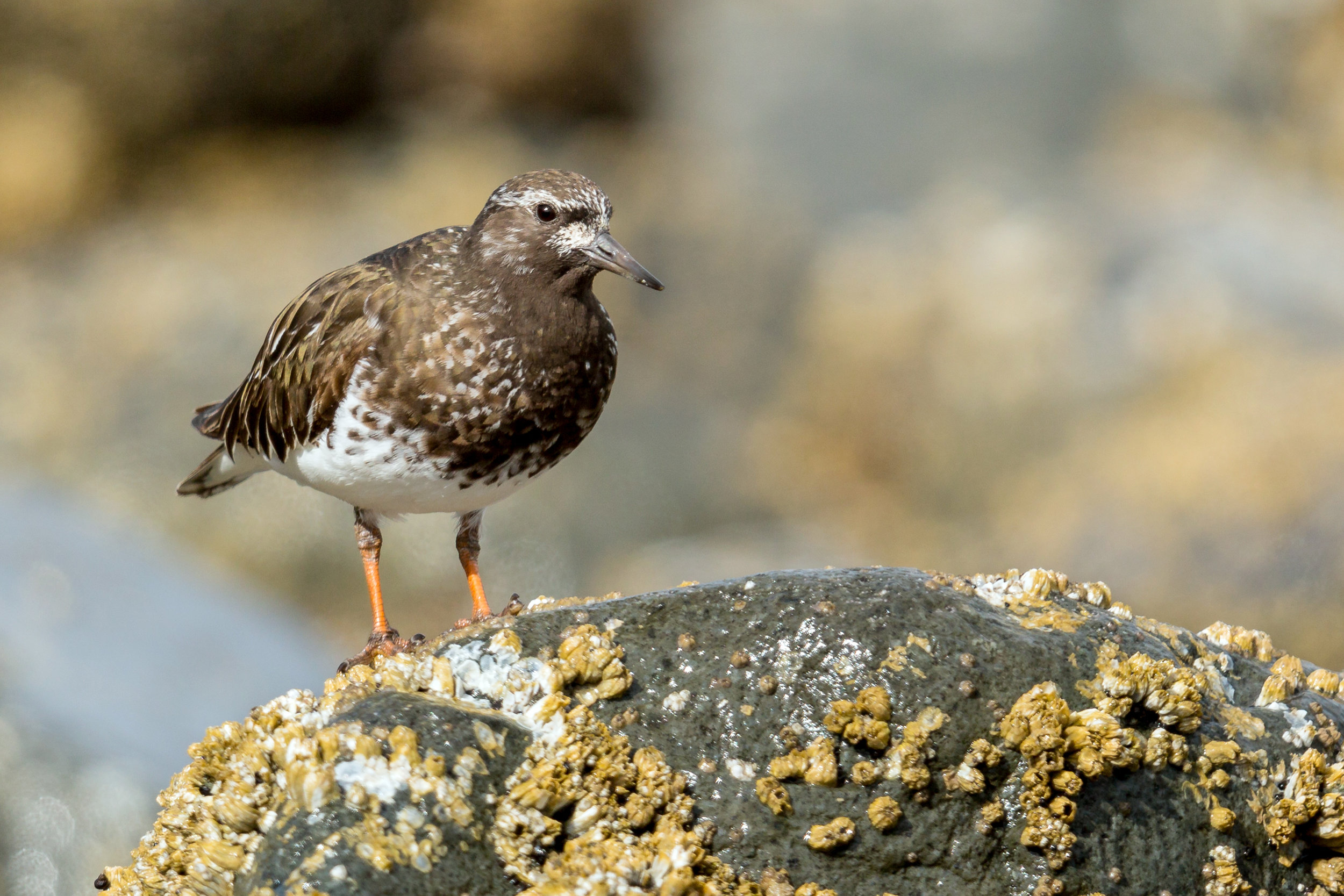Bird of the Month: Black Turnstone
By Hugh Jennings
PC: Mick Thompson (Black Turnstone)
Arenaria melanocephala
Length 9.25 in
Wingspan 21 in
Weight 4.2 oz
AOU Band code BLTU
The Black Turnstone (BLTU) is about 9.25” long with a wingspan of 21” and weight of 4.2 oz. (120g). The genus name Arenaria (are-eh-NAY-rih-ah) is from Latin, pertaining to a sandy place (habitat). The species name melanocephala (mel-ah-no-SEFF-ah-lah) is from Greek melas, black, and kephale, head. “Turnstone” denotes the habit of these birds, and ruddy turnstones, of turning over, with its short, stout bill, stones, shells, seaweed and other objects in their search for food. This bird can be found on the wave-washed rocky shorelines along the length of the Pacific coast in winter. Against a dark background of dark rocks this bird is hard to see when it sits still, but it is usually moving, clambering about in search of barnacles and limpets. The BLTU is strictly coastal and seen on rocky shores, breakwaters and islets. It nests in Alaska on wet, coastal tundra near estuaries or lagoons. In Washington state it is a common migrant and winter resident. The best sites include Penn Cove, Fort Flagler, Ediz Hook, Neah Bay and the mouth of the Columbia River. It rests on log booms (e.g., Ediz Hook), piers, boats and rafts. The BLTU is also frequently seen on the West Seattle shoreline. They roost in mixed flocks with other shorebirds, like Surfbirds, Rock Sandpipers and the less common Ruddy Turnstone.
This is a black shorebird with a white belly. In summer there is a distinctive white spot between the eye and bill, but no white spot in winter. In flight, there is a striking pattern of white stripes on the wing and back, and a clean white underwing. The legs are dusky color, but can be orange-brown. The bill is black, short and slightly upturned. Adults often come back to the exact same sites and nest with the same mate each year. The male displays with a circular flight over its territory. Alarm calls are given when intruder’s approach. The call is a long, low rattle with slight pitch changes krkrkrkrkr. There also is a clear, nasal WEEpa WEEpa WEEpa. The nest, usually built by both parents, is a hollowed-out depression lined with bits of grass, and located in dead grass near water. Typically, there are four eggs, olive-yellow with brown patches. Incubation is by both parents, usually 22-24 days. The downy young leave the nest soon after hatching. Both parents take care of the young at first, but the female usually leaves after about two weeks leaving the male to care for them. The young find all their own food. They can make short flights after about 23 days and can fly well at about 28-30 days.


